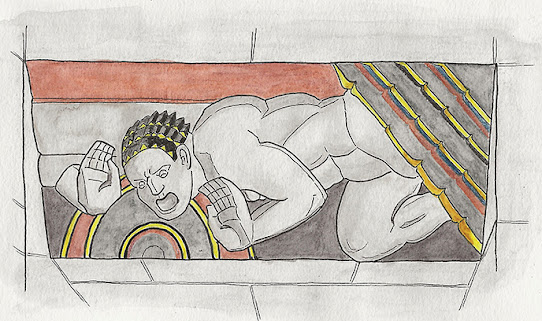Rockefeller Center is one of the most iconic locations in a city full of iconic locations. It's a complex of 19 commercial buildings in Midtown Manhattan. Among its most famous tenants are NBC and Radio City Music Hall, as well as home of the famous skating rink and the site of the annual giant Christmas tree.
It was conceived by John D. Rockefeller Jr. during the latter years of the Roaring Twenties. Originally it was intended to be the new home of the Metropolitan Opera, but the opera pulled out and was replaced by RCA (later NBC). Despite the 1929 Stock Market Crash and subsequent Great Depression, Rockefeller pursued the project. It was the largest private building project ever undertaken by private capital. His ambition was to create the "most inspiring example of urban planning that New York has ever seen," and to "demonstrate faith in the country's future when everything was going dead wrong, and to provide work in a time of lengthening breadlines." When construction begin in 1931, 1/3 of the manufacturing firms New York were out of business, and 64% of construction workers were out of work. Rockefeller's development provided employment for tens of thousands of men over the next decade.
The initial plans for Rockefeller Center, by architects L. Andrew Reinhard and Henry Hofmeister, were met with scorn from critics such as Lewis Mumford, who said they were "bad with an almost juvenile badness." But by its opening in 1940, it was a popular success, with Ira Gershwin writing, "They all laughed at Rockefeller Center, now they're fighting to get in . . . Ha, ha, ha! Who's got the last laugh now?"
From the start, the complex was designed to be filled with public art, roughly focused on the theme, "The March of Civilization." There's an awful lot of Greek mythology-inspired sculptures and friezes that celebrate European colonialism and capitalist industrialism. Lots of swole Art Deco demi-gods celebrating mineral extraction and tobacco and international commerce.
The giant sculpture Wisdom looms over the entrance to 30 Rockefeller Center. It was designed by Lee Lawrie. Lawrie (1877-1963) was a leading American architectural sculptor, creating over 300 commissions in various styles, including Modern Gothic, Beaux-Arts, Classicism, and Art Deco. His family immigrated from Germany to Chicago when he was a young child, and he began working as an assistant to area sculptors at age 15, later receiving a bachelor's degree in fine arts from Yale University. Lawrie created a dozen pieces for Rockefeller Center, the most of any artist.
These two pieces, Sound and Light, flank Wisdom at the entrance to 30 Rock. This was the headquarters of RCA, now NBC (It's where Liz Lemon works on "30 Rock.") Radio and motion pictures were creating the modern media environment. These two figures represent these two industries that were achieving global significance.
All three are by the team of Lawrie and Léon-Victor Solon. Lawrie designed the sculptures, and Solon applied color using a polychrome technique.






No comments:
Post a Comment